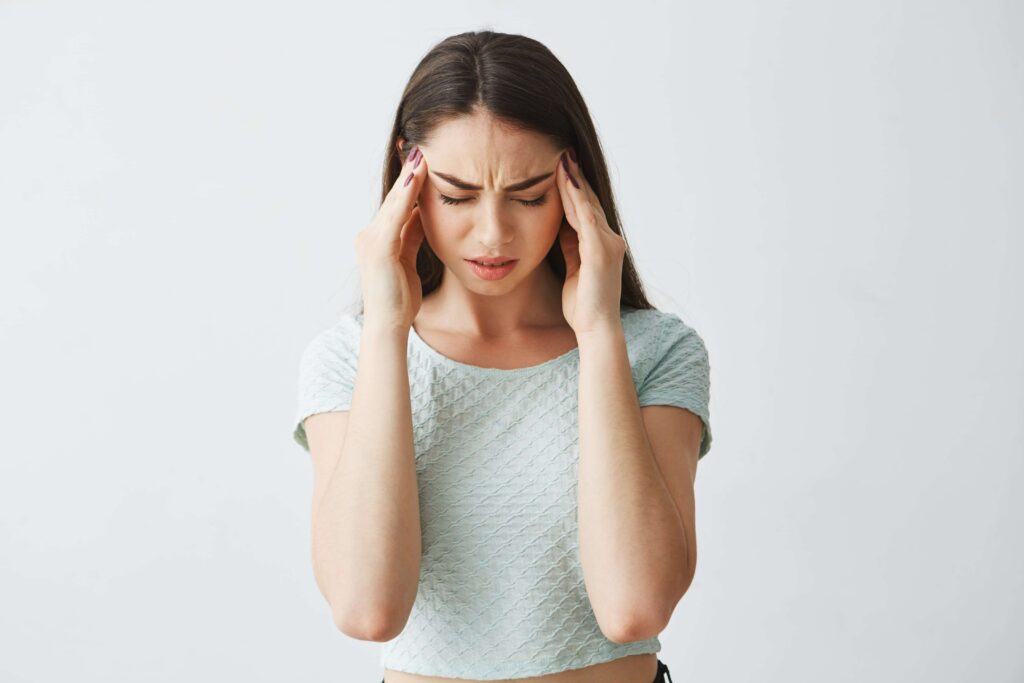So, you’ve taken the plunge and decided to straighten your teeth with Invisalign. Congratulations! This innovative alternative to traditional braces provides a discrete and convenient method of achieving a beautiful smile. However, like with any orthodontic therapy, you may have some side effects of Invisalign.
One common fear among Invisalign patients and query presented to the orthodontists is whether Invisalign causes headaches. Do you also have this doubt? Don’t worry. You’ve clicked the correct link. This blog post looks at some proven ways of dealing with headaches or any other discomforts that may develop during your treatment.
Can Invisalign Cause Headaches?
It’s not uncommon for people to experience headaches when they first start wearing Invisalign clear braces. The reason behind this discomfort is often due to the gradual shifting of your teeth.
Invisalign headaches are especially prevalent during the initial stages of treatment. It’s important to note that they are usually temporary and tend to subside as your mouth adjusts to the aligners.
Why Are Your New Invisalign Aligners Causing You Headaches?
A variety of factors can cause Invisalign Headaches. To begin, the aligners may cause minor adjustments in your bite, which may result in transient jaw and muscle stiffness. As your teeth start to move into their desired positions, they can sometimes trigger headaches.
Furthermore, you may develop headaches as a result of the psychological stress of wearing aligners for the first time. It is quite natural and nothing to worry about.
Headaches can also be a result of you grinding your teeth. Clinching teeth is a common temptation when you get your new aligners. If you already have bruxism or teeth grinding disorder, you need to discuss this with your orthodontist before getting Invisalign.
What Are the Most Common Side Effects of Invisalign?
The following are the most prevalent Invisalign side effects that you may encounter during your treatment. Remember that these are usually minor and transitory side effects. Most of the time, the advantages of Invisalign far exceed any discomfort.
- Headache: As previously stated, headaches can develop as a result of teeth shifting and changes in your bite during Invisalign treatment. These headaches, however, are generally just transitory and go away as your mouth adjusts to the aligners.
- Soreness or Discomfort: It’s natural to feel pain or discomfort when you first begin using Invisalign aligners. This soreness is caused by your teeth adapting to the aligners. It is most evident during the first few days of each new set of aligners.
- Allergic Response: Although uncommon, you may have an allergic response to the material used in Invisalign aligners. Contact your orthodontist right away if you detect any indications of an allergic reaction, such as swelling, itching, or a rash.
What Are Some Proven Headache Management Techniques?
While headaches are undoubtedly one of the most troublesome Invisalign side effects, there are numerous techniques you can use to lessen or manage the discomfort. They are:
-
- Non-prescription Pain Medicine: Non-prescription pain medicines such as acetaminophen or ibuprofen can give short headache relief. However, before taking any drug, please speak with your orthodontist or healthcare practitioner.
- Apply Warm or Cold compresses: Applying a compress to the temples or jaw area might help relieve headache discomfort and relax tight muscles. You can choose either cold or warm temperatures, whichever gives you the most incredible relief.
- Relaxation Techniques: Headaches can be exacerbated by stress and anxiety. Relaxation practices such as deep breathing exercises, meditation, or yoga can help relieve tension and headaches.
- Drink Plenty of Water: Dehydration can aggravate headaches. Keep your body and mouth hydrated by drinking lots of water throughout the day.
- Adjust Your Aligners: If your headaches continue, talk to your orthodontist about it. They might be able to make minor modifications to your aligners to relieve the pressure that is causing your headaches.
- Fix Teeth Grinding: If you feel that teeth grinding or clenching is causing your headaches, your orthodontist can recommend a nightguard or other measures to minimize it.
Starting your Invisalign adventure is an exciting step towards obtaining the smile of your dreams. While headaches are a common side effect of using Invisalign aligners, they are manageable with a few straightforward measures.
Remember to remain hydrated, use over-the-counter pain medicines if necessary, practice stress-reduction strategies, and visit your orthodontist if you have recurring headaches.
You’ll soon be on your way to a straighter, more confident smile with patience, appropriate care, and the supervision of your orthodontist.

0 comments on “Can Invisalign Cause Headaches? How Can You Cope With It?”